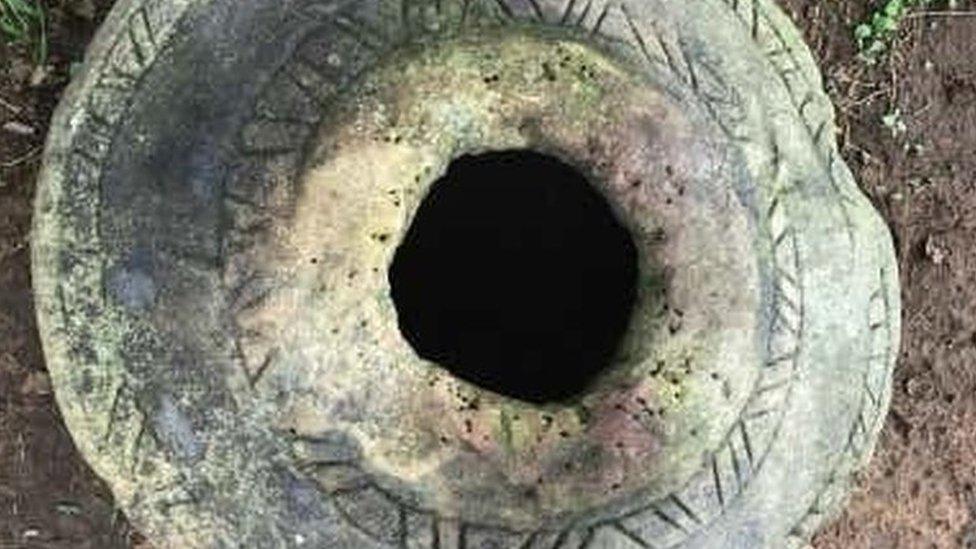MAP Encyclopaedia: India's rich art history is just a click away now
- Published
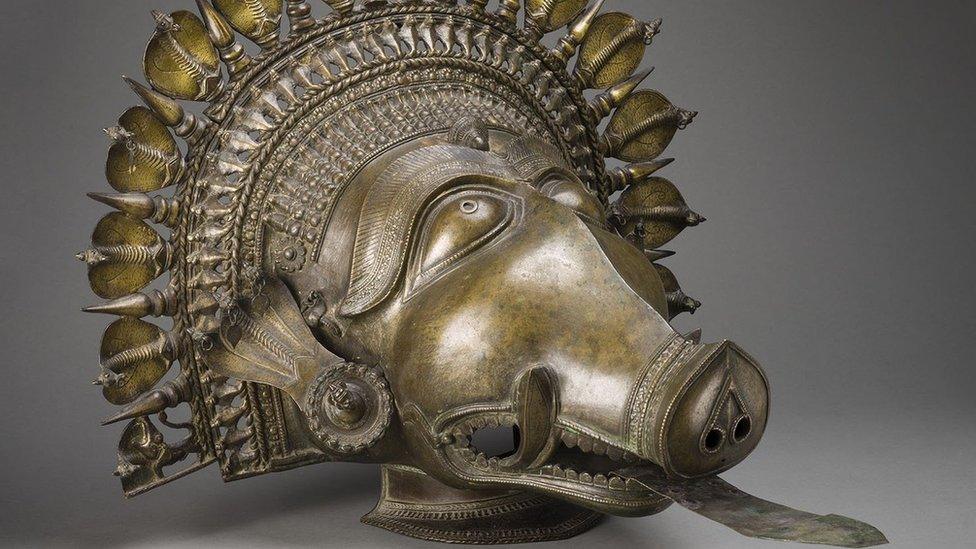
An 18th Century dancer's headpiece in the form of a boar spirit deity
Joy Paul, 25, loves art. He loves history even more.
His fondness for sculptures, coins and deities was "effortless", he says, though he suspects that Assassin's Creed - a video game whose swashbuckling story lines revolve around pivotal moments in history - may have played a part.
So when he got accepted at Delhi College of Art - one of India's most prestigious art schools - he had high hopes.
But the curriculum turned out to be a "blitzkrieg through centuries of art history with few introductions and half-hearted explanations".
He was also upset with how dry his textbooks and reference materials were: "The writing was so archaic and unnecessarily complicated that it was hard even for a history geek like me."
India has one of the world's richest art histories, spanning centuries and a mélange of forms, styles and inspirations.
But it is also hard to access for anyone without an academic grounding in the subject. Even the most compelling object is often described by scholars in a dense, opaque manner that can wear down even genuine enthusiasts.
Now, a museum in the southern city of Bangalore is hoping to change that.
The Museum of Art and Photography (MAP) - a private museum founded by art collector Abhishek Poddar - has launched the Encyclopaedia of Indian Art, external, an open-source repository that allows anyone to view and read about an enormous collection of Indian paintings, photographs, living traditions, architecture and textiles.
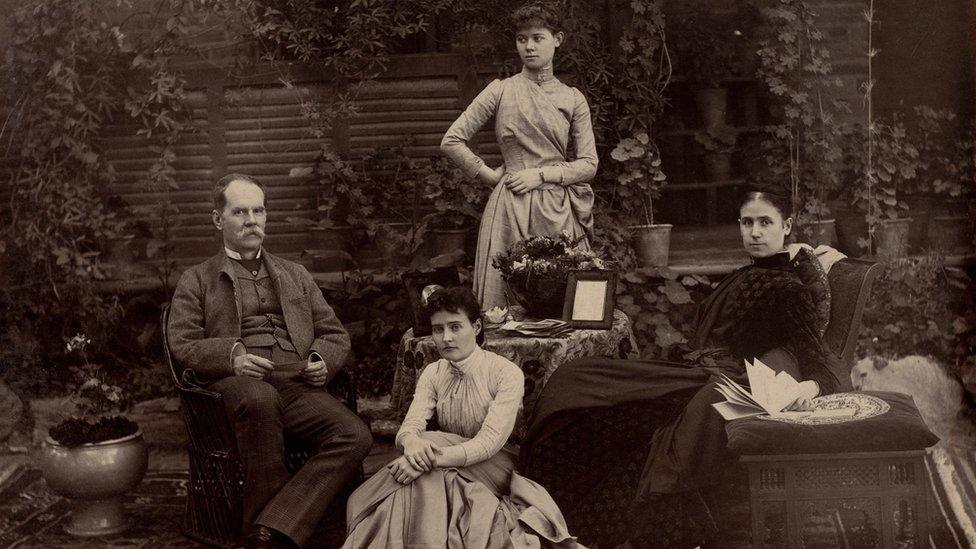
The repository covers not just paintings and sculptures but also some iconic photographs
The website - which is the brain child of the museum's latest educational project, the MAP Academy - currently has 2,000 entries that were written from scratch by a team of young Indian academics and art historians and peer-reviewed by prominent experts.
The material spans an exhaustive timeline, ranging from 10,000-year-old cave drawings to the biggest contemporary names from the last decade. It also includes several artists who haven't received mainstream recognition.
"The aim is not only to have all of art history on a single platform in an easy-to-understand format, but also fill the gaps in the way it has been documented so far, by making it more regionally and gender diverse," says Nathaniel Gaskell, the director of MAP Academy.
"It will take time to build something like this but we are ready to do it."
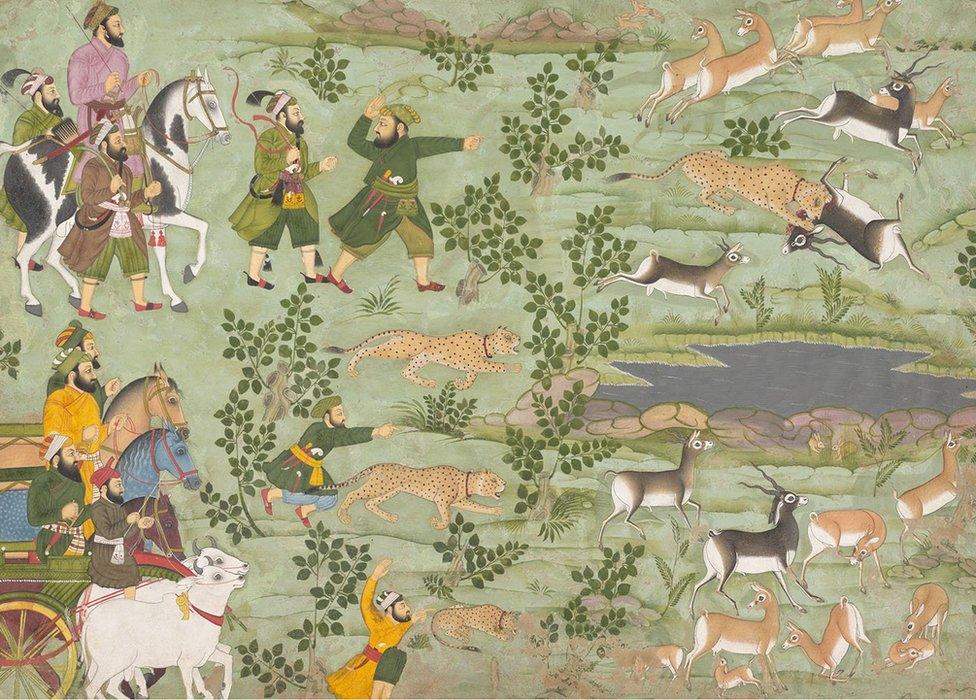
A miniature painting showing Mughal emperor Shah Jahan hunting blackbucks with trained cheetahs
The project is an example of how art and culture repositories can bring young people into the fold, experts say, adding that Indian museums are struggling to stay relevant because they haven't evolved with the times.
"Today, you have a huge number of highly qualified and talented young people who can help museums with audience building," says Shukla Sawant, an artist and professor at Jawaharlal Nehru University. "But instead, the government hires senior artists or administrators who are not even experts in the field."
Historian William Darlymple says that private museums such as MAP are encouraging prospects, considering how culture is "often mismanaged" by governments.
"Besides, Indian art history is very unwritten compared to that of Europe," he adds. "There's very little reliable information available to anyone who doesn't have access to a good university library."
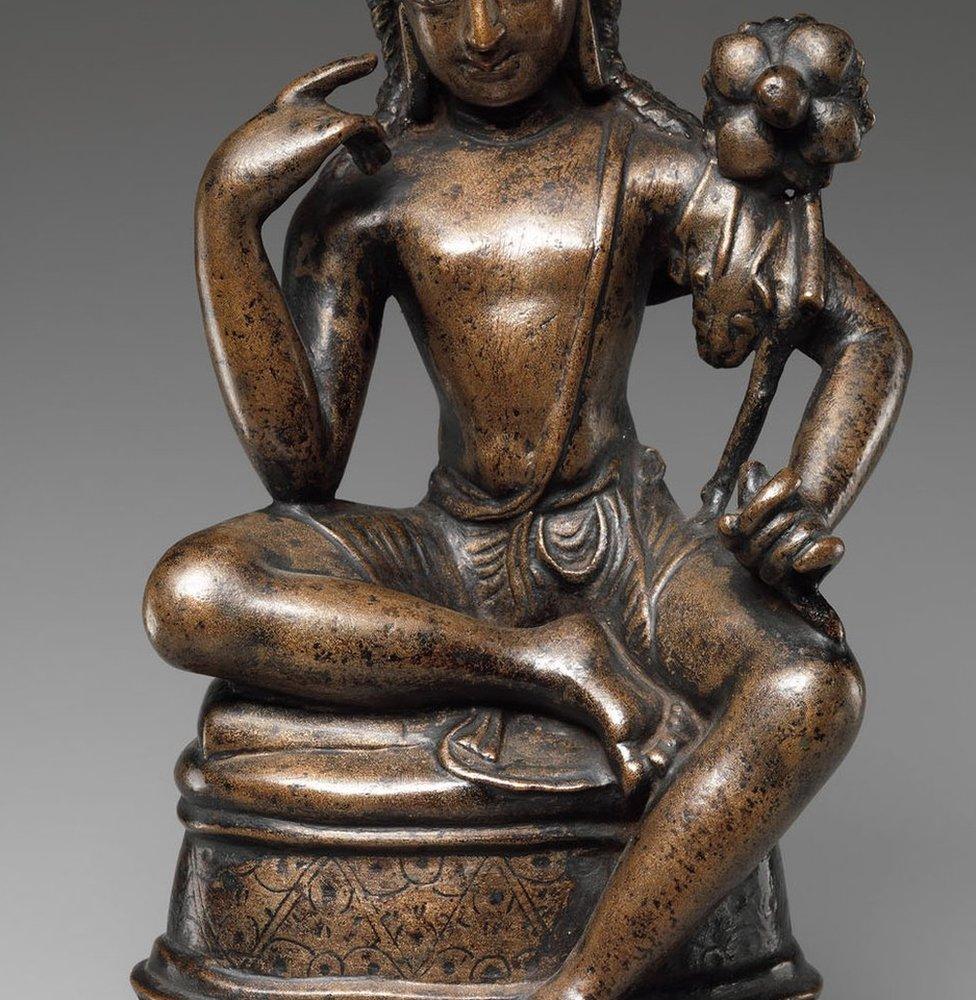
A 7th century sculpture made with bronze and inlaid with silver and copper

Alternate museum-making practices such as the digital encyclopaedia also offer hope that art can flourish without depending on wealthy patrons - increasing opportunities for artists who don't have powerful backers.
"There is a huge number of artists who have contributed significantly to Indian culture, '' Ms Sawant says. "But their histories have neither been mapped nor has their work been documented. And now they are on the cusp of disappearing completely."
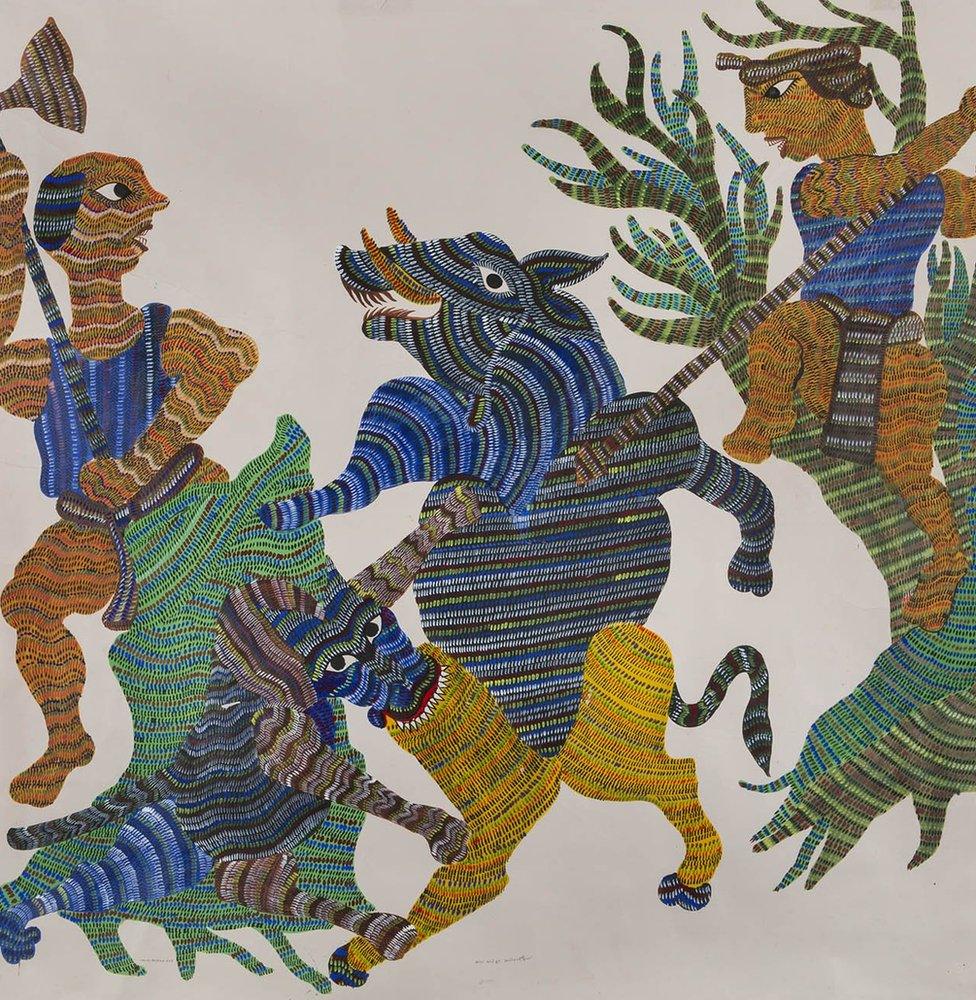
The museum has made a special effort to document indigenous art such as the Gond murals of central India
But MAP Academy is intent on telling a different, more inclusive story.
Mr Gaskell says they have worked hard to spotlight lesser-known Indian artists who weren't given a place at the cultural high table.
The result is an interesting, educational mix. We learn about the refinement found in Mughal miniatures and the resplendence hidden in flat compositions of Rajasthani paintings; alongside, we discover the vitality of Pithora art, a mural painting tradition found in central India.
There's the ingenuity of Zain ud-Din, who fused European naturalism with a warmth that was quintessentially Indian. But there's also the lively vocabulary of Bhuri Bai, the first woman from an indigenous group in India - the Bhils - to paint on paper; the contrasting worlds of deity and devotee imagined by Nainsukh, an 18th Century painter.

A painting by Bhuri Bai

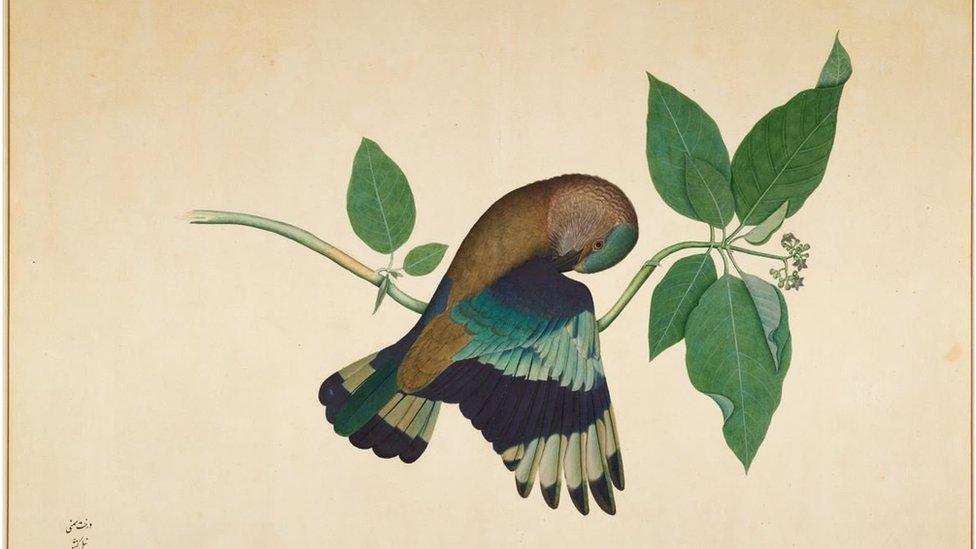
This 1779 painting by Zain ud-Din depicts an Indian roller on a branch of a sandalwood tree
The information is untethered from linear history - allowing one to dive into the details, rather than simply leaping from one period to another.
It is "a bit like a rabbit hole", Mr Gaskell says, where everything is interconnected but it is left to the reader to explore these connections at their leisure.
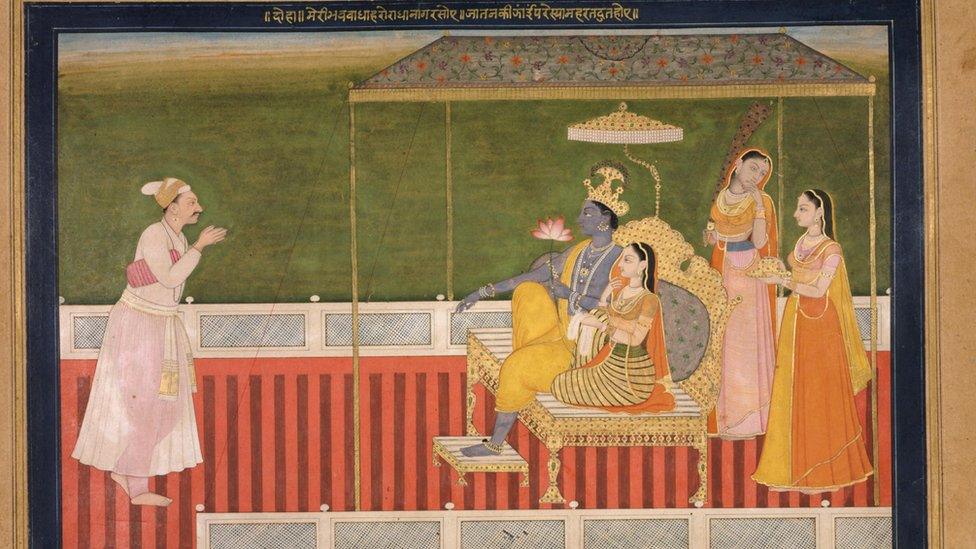
Nainsukh's paintings were inspired by religious texts
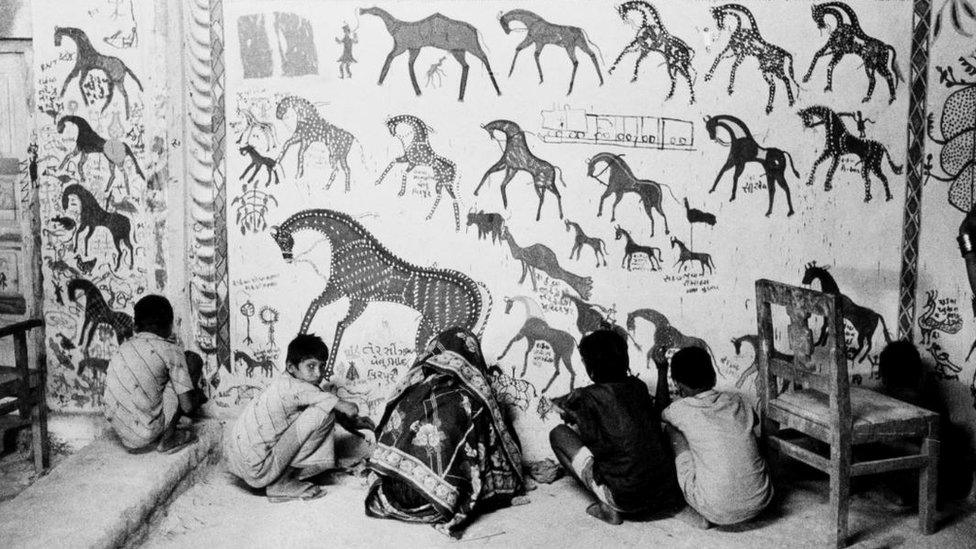
People gathered in front of a Pithora mural
The encyclopaedia also devotes plenty of space to a textile section. The idea, Mr Gaskell, says is not only to encompass artists from all regions but to also downplay the traditional dominance of painting and sculpture in the art discourse.
In the process, they found a number of interesting stories. He narrates one favourite during a video call.
"Do you know about the sheep trees?"
It refers to a centuries-old European myth that cotton, which was produced and exported from India, grew on lamb-bearing trees, he explains.
"People were so fascinated that European manuscripts actually had illustrations depicting this!" he says.
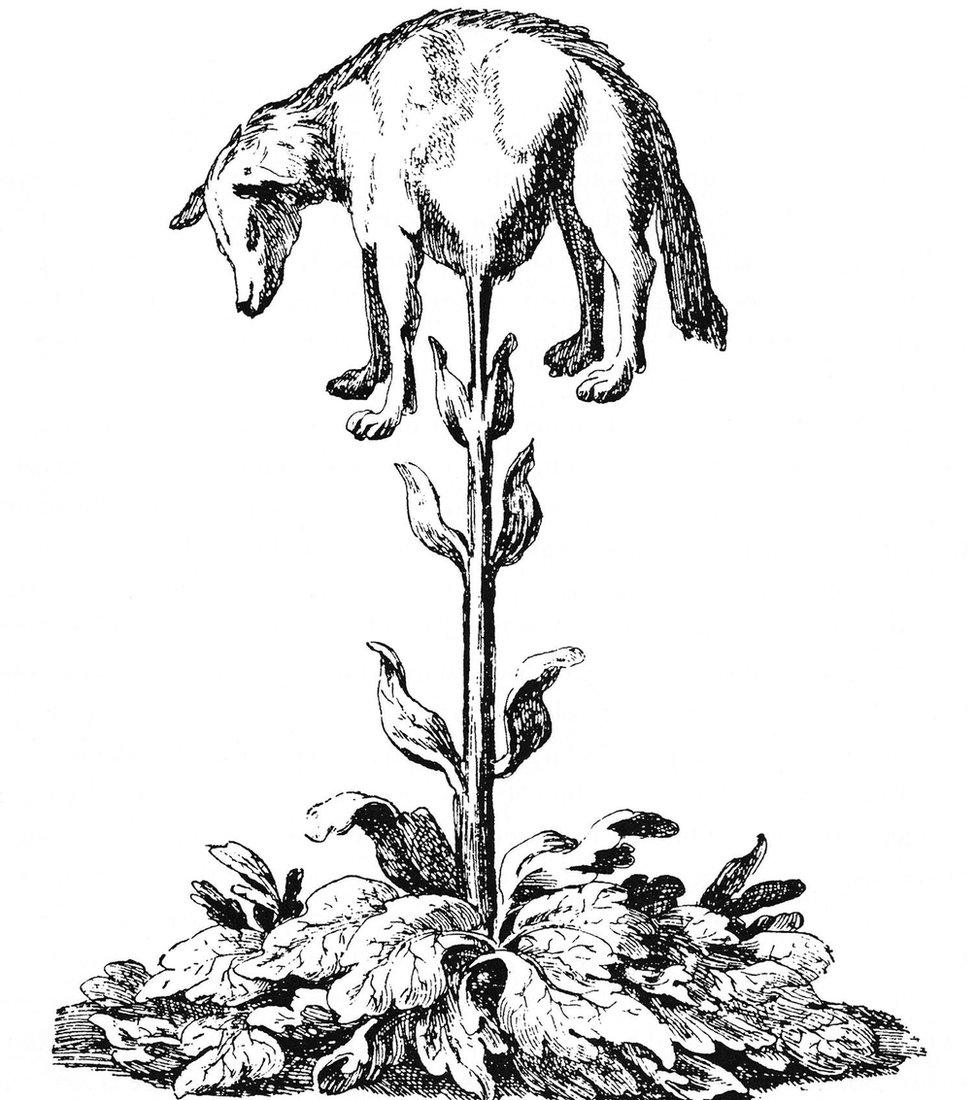
The Vegetable Lamb by Henry Lee

"Under the Eurocentric canon, you get the impression that art was a subject of wealthy kings and rulers, produced only by a certain type of artist under certain cultures," Mr Gaskell says. "But there are so many other living traditions, rural art forms, and regional artists in the country."
Indian textiles have a huge global history that encompasses everything from rich silks, breathable cotton and flowing linen to hand-blocked fabric. Textile production reached its highest visual expression in the Indian subcontinent, where weavers would toil away for weeks or months to finish one masterpiece.
And MAP Academy hopes to document all of it.
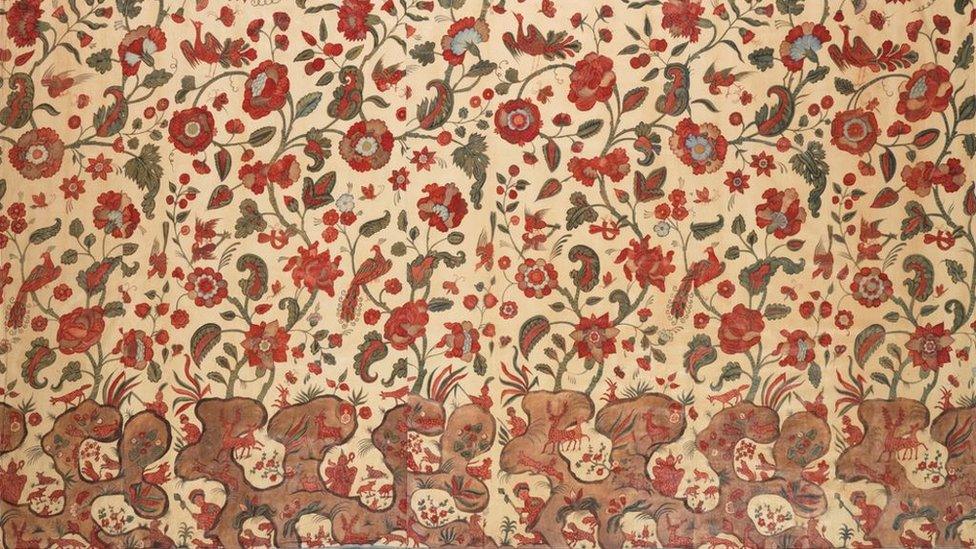
Dr Rosemary Crill, a former senior curator at London's V&A Museum, says that while India does have a strong tradition of studying its textiles, "specific encyclopaedia entries will help shed light on types that people might not even be aware of".
"One of the great merits of it is that it will bring information together for anyone who has access to a computer, or even a mobile phone," she adds.
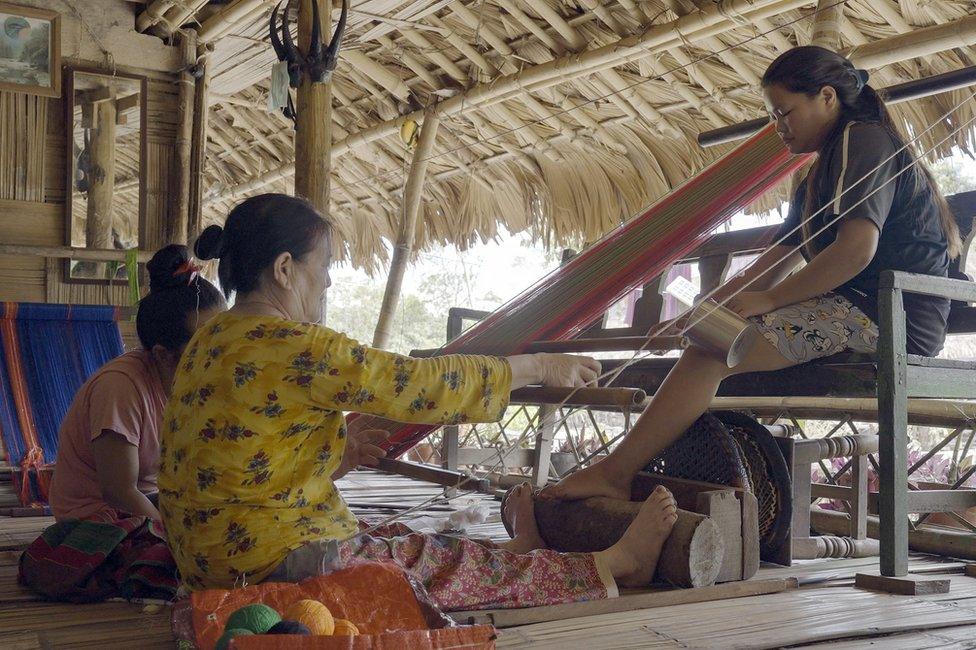
The MAP team made extensive research trips to north-eastern India to document its textile industry
For Mr Gaskell, the encyclopaedia is still very much a work in progress - his team will spend the next few years writing "more and more articles" until they are able to bridge the gap between "the richness of art history and the availability of material".
But the project is already receiving high praise.
"Despite having the greatest, one of the most beautiful civilisations on earth, India has failed to produce almost any good museums until the last few years," Mr Dalrymple says.
"But that's beginning to change and MAP is part of that change."
Even as an educational resource, experts say its value is enormous.
"There are art institutions in the country - but someone needs to sift through their material, dig out information, identify talent from the remotest corners of the country and document their histories," Ms Sawant says.
"MAP does that for you - it gives you a starting point we've never had before."
Most promisingly, even students such as Mr Paul seem to agree.
"This is cool," he says. "This is new."
- Published19 February 2022
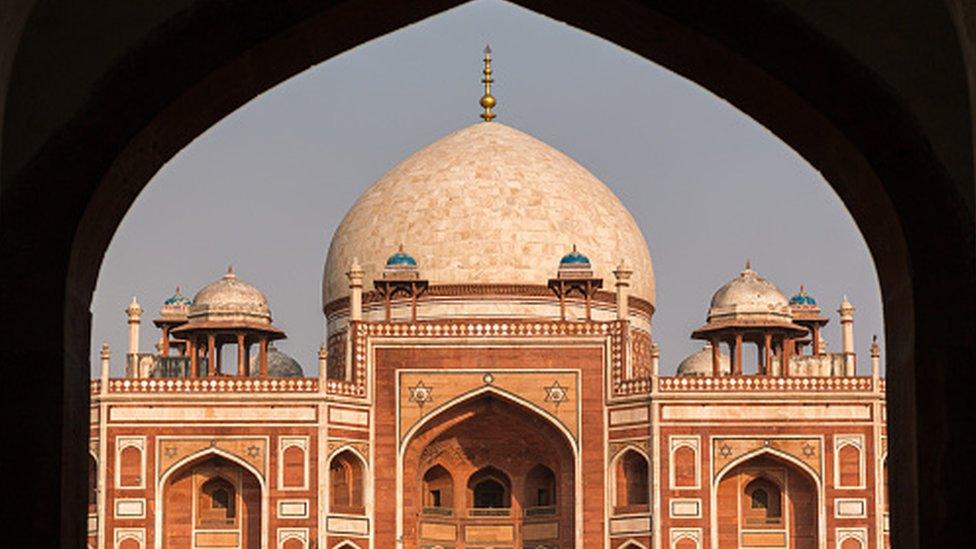
- Published30 November 2019
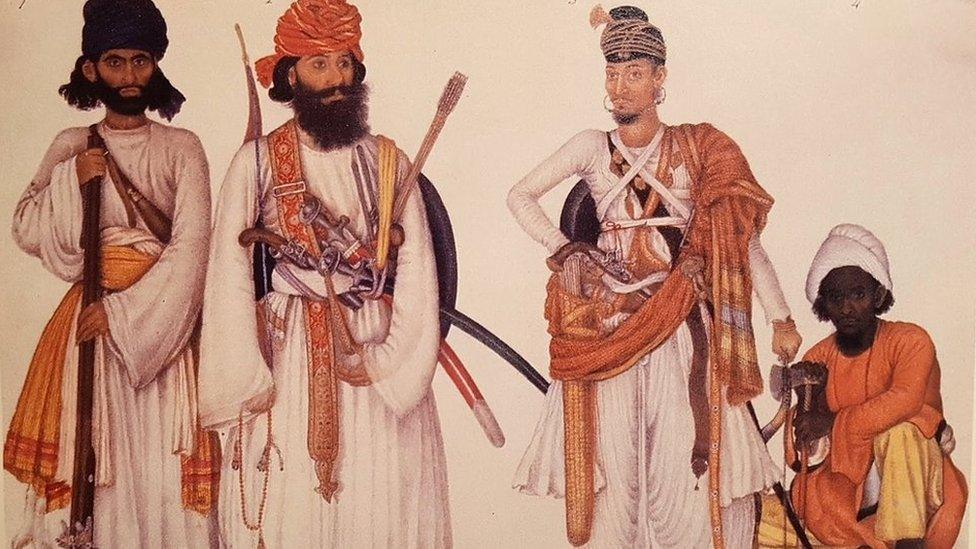
- Published31 March 2022
